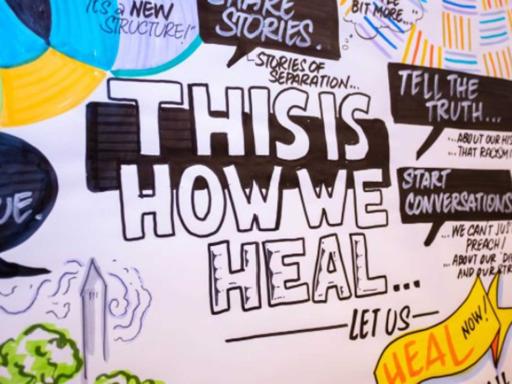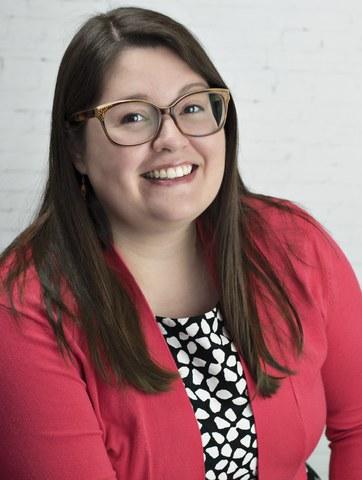Healing is Necessary for Hope to Persist
A blog by Rosemary Linares, Co-Coordinator for the Battle Creek Coalition for Truth, Racial Healing & Transformation
A blog by Rosemary Linares, Co-Coordinator for the Battle Creek Coalition for Truth, Racial Healing & Transformation


By Rosemary Linares, Co-Coordinator for the Battle Creek Coalition for Truth, Racial Healing & Transformation
As a country, we continue to face the daunting challenge and opportunity to dismantle systemic racism and white supremacy. As a result of COVID-19 and intersecting forms of oppression, historically marginalized communities are continuing to experience compounded, negative effects from this dual public health and economic crisis. The planet and all of its people will continue to feel the reverberating effects of this global pandemic for years to come.
In this country, activists have organized for generations to dismantle oppressive systems that result in disparate outcomes based on race, gender identity, sexual orientation, class, disability, and other lines of difference regarding education, health, housing, economic opportunity, the law and civic engagement.
Right now, we are witnessing social change in action through mobilization, protest, resistance, rebellion, uprising and resilience. This reminds us that hope can coexist with suffering and grief, and that healing is necessary for hope to persist.
A friend and comrade recently asked, “how can we heal when we continue to be retraumatized?” Reflecting on this question, I believe that racial healing is an iterative individual and collective process, not an outcome. Racial healing activities aim to honor our common humanity across the social constructs of race and ethnicity, while deepening our relationships with each other and ourselves.
The framework for Truth, Racial Healing & Transformation (TRHT) was developed by leaders in the field of racial equity and justice. I admire and respect those who designed the framework, acknowledging that it is grounded in generations of anti-racist, decolonizing, truth and reconciliation theory and action. Healing circles date back thousands of years to Native practices in the Americas, Africa and Asia. Our modern application of racial healing circles forms a foundational tenet of the TRHT framework.
In my role as co-coordinator for the Battle Creek Coalition for TRHT for the past four years, I have worked collaboratively with others to support the implementation of the TRHT framework in the community, I also became a racial healing practitioner, helping ensure that racial healing circles are confidential, safe spaces for participants to have truthful conversations with one another.
Our coalition’s long-term goal is to be a catalyst for a racial equity movement in which all can flourish. I have been blessed to work alongside so many committed and passionate community members who are fervently taking action to bring this vision to fruition.
Beyond the duties required of me in this role, I have experienced a calling from a higher power to use my skills and expertise to facilitate social change and healing processes throughout my life.
My involvement in TRHT has made this personal, spiritual and professional calling abundantly clear to me. While immersed in this work, I have experienced so many new meaningful friendships and connections. These individuals have made an indelible impression on my life story, and I am humbled by this opportunity to meet peers who share this calling as their life’s work.
When we share personal stories about our journeys in this racialized society, it is with empathy and compassion that we learn how much more connected we are than we are disconnected. Only through deeper connection will we bridge this highly polarized culture in which we are currently surviving. Cultivating this authentic connection requires vulnerability and bold risk taking, which I have witnessed countless times in Battle Creek. Bearing witness to these powerful examples of transformation, I continually come away feeling inspired.
A culminating racial healing project in 2021 for our local TRHT coalition was the creation of a compilation of personal testimonies from Battle Creek community members. How We Heal: An Anthology of Personal Testimonies about Racial Healing in Battle Creek will be available in early 2022. Readers of this book will recognize their own experiences in the authors’ stories, along with divergent perspectives that illustrate how complex and beautiful the human experience is.
For this year’s National Day of Racial Healing, I find myself in deep reflection. I invite all readers of this blog to consider the following questions that we also highlight in our book:
1. Think about how you engage in practices to nurture your own racial healing. What practices are central in how you engage in racial healing that you want to continue doing? What new practices do you want to start doing to foster racial healing for yourself?
2. Identify your role in bringing about the transformation that will lead to our collective racial healing. What do you need to change in your own behaviors and patterns in order to support our collective racial healing?
Rosemary Linares serves as co-coordinator for the Battle Creek Coalition for Truth, Racial Healing, and Transformation (TRHT). Battle Creek TRHT is one of four Michigan sites including Flint, Kalamazoo and Lansing. These sites have been working deeply in TRHT efforts for several years, supported by CMF with funding from the W.K. Kellogg Foundation. CMF serves as the coordinator of the Michigan TRHT initiative and facilitates the TRHT Michigan Advisory Council, which identifies priorities for the Michigan sites to collaborate effectively and implement state-wide strategies.
Want more?
Learn more about How We Heal: An Anthology of Personal Testimonies about Racial Healing in Battle Creek.
Learn more about Battle Creek Coalition for Truth, Racial Healing, and Transformation.